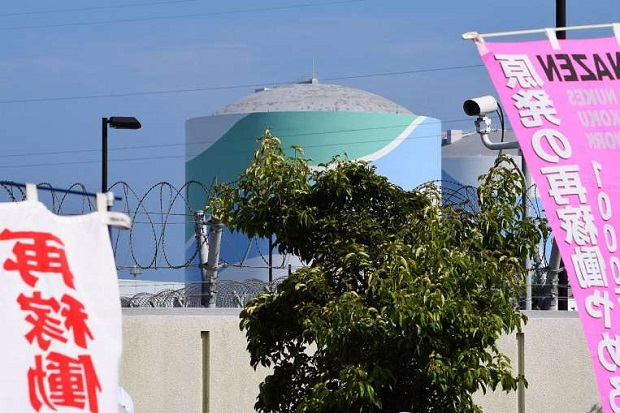Japan ends nuclear shutdown four years after Fukushima
Japan on Tuesday ended a two-year nuclear shutdown in the energy-hungry country, sparked by public fears following the 2011 Fukushima crisis, the worst atomic disaster in a generation.
Utility Kyushu Electric Power turned on a reactor at Sendai, about 1,000 kilometers (620 miles) southwest of Tokyo, at 10:30 a.m. (0130 GMT).
The 31-year-old reactor—operating under tougher post-Fukushima safety rules—was expected to reach full capacity around 11:00 p.m. Tuesday and would start generating power by Friday.
Commercial operations are to begin early next month, a company spokesman said.
The restart comes more than four years after a quake-sparked tsunami triggered meltdowns at the Fukushima plant, prompting the shutdown of Japan’s stable of reactors and setting off a pitched battle over the future use of atomic power.
Article continues after this advertisementThe accident sent radiation over a wide area and forced tens of thousands of people from their homes— many of whom will likely never return.
Article continues after this advertisementDecommissioning of the crippled Fukushima reactors is expected to take decades with compensation expenses—excluding the cost of the site’s clean up—now topping $57 billion.
Anti-nuclear sentiment still runs high in Japan and television showed protesters scuffling with police in front of the Sendai plant, which is on the southernmost main island of Kyushu.
Local media said about 200 protesters gathered at the site, including former prime minister Naoto Kan who has become a high-profile anti-nuclear activist.
The resource-poor nation, which once relied on nuclear power for a quarter of its electricity, restarted two reactors temporarily to feed its needs after Fukushima. But they both went offline by September 2013, making Japan completely nuclear-free for about two years.
‘Safety first’
The country has ushered in stricter safety regulations to avoid a repeat of the accident, including more backup prevention measures and higher tsunami-blocking walls in some areas.
“It is important to restart reactors one by one from the perspective of energy security, the economy and measures against global warming, but safety always comes first,” Industry Minister Yoichi Miyazawa told reporters.
If another atomic accident happened, he added, the government would “deal with it responsibly.”
Beefed-up safety measures are key to Prime Minister Shinzo Abe’s bid to get some of about four dozen reactors back up and running, as Tokyo’s energy policy sets its sights on nuclear accounting for as much as 22 percent of Japan’s energy needs by 2030.
Power companies that own them are also keen for more restarts, fed up with having to make up lost generating capacity with pricey fossil fuels.
Japan’s post-Fukushima energy bill skyrocketed as it scrambled to fill the gap left by taking reactors offline, pushing the country into successive trade deficits.
Those expenses were exacerbated by a sharp weakening of the yen, which pushed up costs for energy imports paid for in other currencies, particularly the US dollar.
Several other reactors have received a safety green light from officials, but battle lines have been drawn with many local communities strongly opposed to restarts.
Takashi Kato, professor emeritus at Tokyo’s Seikei University, was critical of Tuesday’s restart, saying Abe’s close business ties were trumping safety concerns.
“Abe is not listening to the voice of the people—he is acting as if he has been given a blank cheque,” Kato said.
“It is big business demanding a stable supply of power by resuming nuclear reactors, not the general public.”
Safety officials have stressed that any switched-on reactor would operate under much tighter regulations than those that existed before Fukushima, the worst atomic disaster since Chernobyl in 1986.
“A disaster like that at Tokyo Electric Power’s Fukushima Daiichi nuclear plant will not occur,” under the new rules, Nuclear Regulation Authority (NRA) chairman Shunichi Tanaka said in an interview with the Nikkei newspaper published at the weekend.
But Tanaka conceded there was “no such thing as absolute safety,” and Japan’s people are skeptical as the country remains deeply scarred by the legacy of Fukushima.
